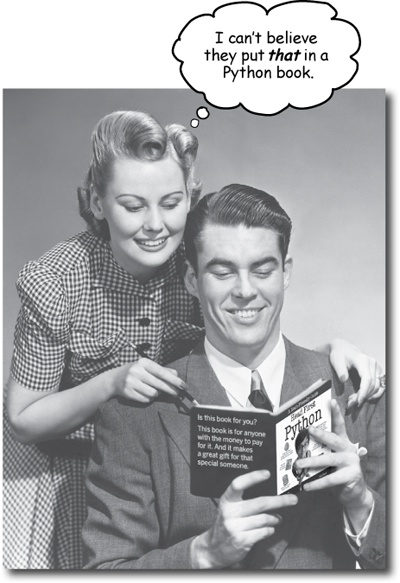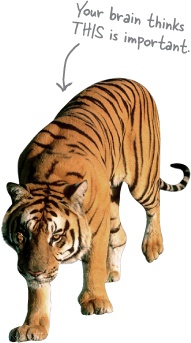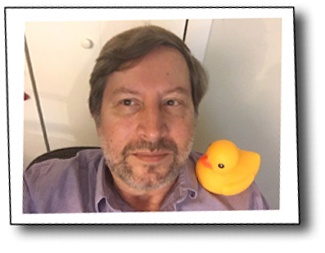How to use this Book: Intro
Who Is This Book For?
If you can answer “yes” to all of these:
Do you already know how to program in another programming language?
Do you wish you had the know-how to program Python, add it to your list of tools, and make it do new things?
Do you prefer actually doing things and applying the stuff you learn over listening to someone in a lecture rattle on for hours on end?
this book is for you.
This is NOT a reference book, and we assume you’ve programmed before.
Who should probably back away from this book?
If you can answer “yes” to any of these:
Do you already know most of what you need to know to program with Python?
Are you looking for a reference book to Python, one that covers all the details in excruciating detail?
Would you rather have your toenails pulled out by 15 screaming monkeys than learn something new? Do you believe a Python book should cover everything and if it bores the reader to tears in the process, then so much the better?
this book is not for you.
We Know What You’re Thinking
“How can this be a serious Python book?”
“What’s with all the graphics?”
“Can I actually learn it this way?”
We know what your brain is thinking
Your brain craves novelty. It’s always searching, scanning, waiting for something unusual. It was built that way, and it helps you stay alive.
So what does your brain do with all the routine, ordinary, normal things you encounter? Everything it can to stop them from interfering with the brain’s real job—recording things that matter. It doesn’t bother saving the boring things; they never make it past the “this is obviously not important” filter.
How does your brain know what’s important? Suppose you’re out for a day hike and a tiger jumps in front of you, what happens inside your head and body?
Neurons fire. Emotions crank up. Chemicals surge.
And that’s how your brain knows…
This must be important! Don’t forget it!
But imagine you’re at home, or in a library. It’s a safe, warm, tiger-free zone. You’re studying. Getting ready for an exam. Or trying to learn some tough technical topic your boss thinks will take a week, 10 days at the most.
Just one problem. Your brain’s trying to do you a big favor. It’s trying to make sure that this obviously nonimportant content doesn’t clutter up scarce resources. Resources that are better spent storing the really big things. Like tigers. Like the danger of fire. Like how you should never have posted those “party” photos on your Facebook page. And there’s no simple way to tell your brain, “Hey brain, thank you very much, but no matter how dull this book is, and how little I’m registering on the emotional Richter scale right now, I really do want you to keep this stuff around.”
Metacognition: Thinking About Thinking
If you really want to learn, and you want to learn more quickly and more deeply, pay attention to how you pay attention. Think about how you think. Learn how you learn.
Most of us did not take courses on metacognition or learning theory when we were growing up. We were expected to learn, but rarely taught to learn.
But we assume that if you’re holding this book, you really want to learn how to solve programming problems with Python. And you probably don’t want to spend a lot of time. If you want to use what you read in this book, you need to remember what you read. And for that, you’ve got to understand it. To get the most from this book, or any book or learning experience, take responsibility for your brain. Your brain on this content.
The trick is to get your brain to see the new material you’re learning as Really Important. Crucial to your well-being. As important as a tiger. Otherwise, you’re in for a constant battle, with your brain doing its best to keep the new content from sticking.
So just how DO you get your brain to treat programming like it was a hungry tiger?
There’s the slow, tedious way, or the faster, more effective way. The slow way is about sheer repetition. You obviously know that you are able to learn and remember even the dullest of topics if you keep pounding the same thing into your brain. With enough repetition, your brain says, “This doesn’t feel important to him, but he keeps looking at the same thing over and over and over, so I suppose it must be.”
The faster way is to do anything that increases brain activity, especially different types of brain activity. The things on the previous page are a big part of the solution, and they’re all things that have been proven to help your brain work in your favor. For example, studies show that putting words within the pictures they describe (as opposed to somewhere else in the page, like a caption or in the body text) causes your brain to try to makes sense of how the words and picture relate, and this causes more neurons to fire. More neurons firing = more chances for your brain to get that this is something worth paying attention to, and possibly recording.
A conversational style helps because people tend to pay more attention when they perceive that they’re in a conversation, since they’re expected to follow along and hold up their end. The amazing thing is, your brain doesn’t necessarily care that the “conversation” is between you and a book! On the other hand, if the writing style is formal and dry, your brain perceives it the same way you experience being lectured to while sitting in a roomful of passive attendees. No need to stay awake.
But pictures and conversational style are just the beginning…
Here’s What WE Did:
We used pictures, because your brain is tuned for visuals, not text. As far as your brain’s concerned, a picture really is worth a thousand words. And when text and pictures work together, we embedded the text in the pictures because your brain works more effectively when the text is within the thing the text refers to, as opposed to in a caption or buried in the text somewhere.
We used redundancy, saying the same thing in different ways and with different media types, and multiple senses, to increase the chance that the content gets coded into more than one area of your brain.
We used concepts and pictures in unexpected ways because your brain is tuned for novelty, and we used pictures and ideas with at least some emotional content, because your brain is tuned to pay attention to the biochemistry of emotions. That which causes you to feel something is more likely to be remembered, even if that feeling is nothing more than a little humor, surprise, or interest.
We used a personalized, conversational style, because your brain is tuned to pay more attention when it believes you’re in a conversation than if it thinks you’re passively listening to a presentation. Your brain does this even when you’re reading.
We included more than 80 activities, because your brain is tuned to learn and remember more when you do things than when you read about things. And we made the exercises challenging-yet-doable, because that’s what most people prefer.
We used multiple learning styles, because you might prefer step-by-step procedures, while someone else wants to understand the big picture first, and someone else just wants to see an example. But regardless of your own learning preference, everyone benefits from seeing the same content represented in multiple ways.
We include content for both sides of your brain, because the more of your brain you engage, the more likely you are to learn and remember, and the longer you can stay focused. Since working one side of the brain often means giving the other side a chance to rest, you can be more productive at learning for a longer period of time.
And we included stories and exercises that present more than one point of view, because your brain is tuned to learn more deeply when it’s forced to make evaluations and judgments.
We included challenges, with exercises, and asked questions that don’t always have a straight answer, because your brain is tuned to learn and remember when it has to work at something. Think about it—you can’t get your body in shape just by watching people at the gym. But we did our best to make sure that when you’re working hard, it’s on the right things. That you’re not spending one extra dendrite processing a hard-to-understand example, or parsing difficult, jargon-laden, or overly terse text.
We used people. In stories, examples, pictures, and so on, because, well, you’re a person. And your brain pays more attention to people than it does to things.
Here’s what YOU can do to bend your brain into submission
So, we did our part. The rest is up to you. These tips are a starting point; listen to your brain and figure out what works for you and what doesn’t. Try new things.
Slow down. The more you understand, the less you have to memorize.
Don’t just read. Stop and think. When the book asks you a question, don’t just skip to the answer. Imagine that someone really is asking the question. The more deeply you force your brain to think, the better chance you have of learning and remembering.
Do the exercises. Write your own notes.
We put them in, but if we did them for you, that would be like having someone else do your workouts for you. And don’t just look at the exercises. Use a pencil. There’s plenty of evidence that physical activity while learning can increase the learning.
Read the “There Are No Dumb Questions” sections.
That means all of them. They’re not optional sidebars, they’re part of the core content! Don’t skip them.
Make this the last thing you read before bed. Or at least the last challenging thing.
Part of the learning (especially the transfer to long-term memory) happens after you put the book down. Your brain needs time on its own, to do more processing. If you put in something new during that processing time, some of what you just learned will be lost.
Talk about it. Out loud.
Speaking activates a different part of the brain. If you’re trying to understand something or increase your chance of remembering it later, say it out loud. Better still, try to explain it out loud to someone else. You’ll learn more quickly, and you might uncover ideas you hadn’t known were there when you were reading about it.
Drink water. Lots of it.
Your brain works best in a nice bath of fluid. Dehydration (which can happen before you ever feel thirsty) decreases cognitive function.
Listen to your brain.
Pay attention to whether your brain is getting overloaded. If you find yourself starting to skim the surface or forget what you just read, it’s time for a break. Once you go past a certain point, you won’t learn faster by trying to shove more in, and you might even hurt the process.
Feel something.
Your brain needs to know that this matters. Get involved with the stories. Make up your own captions for the photos. Groaning over a bad joke is still better than feeling nothing at all.
Write a lot of code!
There’s only one way to learn to program in Python: write a lot of code. And that’s what you’re going to do throughout this book. Coding is a skill, and the only way to get good at it is to practice. We’re going to give you a lot of practice: every chapter has exercises that pose a problem for you to solve. Don’t just skip over them—a lot of the learning happens when you solve the exercises. We included a solution to each exercise—don’t be afraid to peek at the solution if you get stuck! (It’s easy to get snagged on something small.) But try to solve the problem before you look at the solution. And definitely get it working before you move on to the next part of the book.
Read Me, 1 of 2
This is a learning experience, not a reference book. We deliberately stripped out everything that might get in the way of learning whatever it is we’re working on at that point in the book. And the first time through, you need to begin at the beginning, because the book makes assumptions about what you’ve already seen and learned.
This book is designed to get you up to speed as quickly as possible.
As you need to know stuff, we teach it. So you won’t find long lists of technical material, no tables of Python’s operators, nor its operator precedence rules. We don’t cover everything, but we’ve worked really hard to cover the essential material as well as we can, so that you can get Python into your brain quickly and have it stay there. The only assumption we make is that you already know how to program in some other programming language.
This book targets Python 3
We use Release 3 of the Python programming language in this book, and we cover how to get and install Python 3 in Appendix A. This book does not use Python 2.
We put Python to work for you right away.
We get you doing useful stuff in Chapter 1 and build from there. There’s no hanging around, because we want you to be productive with Python right away.
The activities are NOT optional—you have to do the work.
The exercises and activities are not add-ons; they’re part of the core content of the book. Some of them are to help with memory, some are for understanding, and some will help you apply what you’ve learned. Don’t skip the exercises.
The redundancy is intentional and important.
One distinct difference in a Head First book is that we want you to really get it. And we want you to finish the book remembering what you’ve learned. Most reference books don’t have retention and recall as a goal, but this book is about learning, so you’ll see some of the same concepts come up more than once.
The examples are as lean as possible.
Our readers tell us that it’s frustrating to wade through 200 lines of an example looking for the two lines they need to understand. Most examples in this book are shown within the smallest possible context, so that the part you’re trying to learn is clear and simple. Don’t expect all of the examples to be robust, or even complete—they are written specifically for learning, and aren’t always fully functional (although we’ve tried to ensure as much as possible that they are).
Read Me, 2 of 2
Yes, there’s more...
This second edition is NOT at all like the first.
This is an update to the first edition of Head First Python, which published late in 2010. Although that book and this one share the same author, he’s now older and (hopefully) wiser, and thus, decided to completely rewrite the first edition’s content for this edition. So...everything is new: the order is different, the content has been updated, the examples are better, and the stories are either gone or have been replaced. We kept the cover—with minor amendments—as we figured we didn’t want to rock the boat too much. It’s been a long six years...we hope you enjoy what we’ve come up with.
Where’s the code?
We’ve placed the code examples on the Web so you can copy and paste them as needed (although we do recommend that you type in the code as you follow along). You’ll find the code at these locations:
The Technical Review Team
Bill Lubanovic has been a developer and admin for forty years. He’s also written for O’Reilly: chapters for two Linux security books, co-authored a Linux admin book, and solo “Introducing Python”. He lives by a frozen lake in the Sangre de Sasquatch mountains of Minnesota with one lovely wife, two lovely children, and three fur-laden cats.
Edward Yue Shung Wong has been hooked on coding since he wrote his first line of Haskell in 2006. Currently he works on event driven tradeprocessing in the heart of the City of London. He enjoys sharing his passion for development with the London Java Community and Software Craftsmanship Community. Away from the keyboard, find Edward in his element on a football pitch or gaming on YouTube (@arkangelofkaos).
Adrienne Lowe is a former personal chef from Atlanta turned Python developer who shares stories, conference recaps, and recipes at her cooking and coding blog Coding with Knives (http://codingwithknives.com). She organizes PyLadiesATL and Django Girls Atlanta and runs the weekly Django Girls “Your Django Story” interview series for women in Python. Adrienne works as a Support Engineer at Emma Inc., as Director of Advancement of the Django Software Foundation, and is on the core team of Write the Docs. She prefers a handwritten letter to email and has been building out her stamp collection since childhood.
Monte Milanuk provided valuable feedback.
Acknowledgments and Thanks
My editor: This edition’s editor is Dawn Schanafelt, and this book is much, much better for Dawn’s involvement. Not only is Dawn a great editor, but her eye for detail and the right way to express things has greatly improved what’s written here. O’Reilly Media make a habit of hiring bright, friendly, capable people, and Dawn is the very personification of these attributes.
The O’Reilly Media team: This edition of Head First Python took four years to write (it’s a long story). It’s only natural, then, that a lot of people from the O’Reilly Media team were involved. Courtney Nash talked me into doing “a quick rewrite” in 2012, then was on hand as the project’s scope ballooned. Courtney was this edition’s first editor, and was on hand when disaster struck and it looked like this book was doomed. As things slowly got back on track, Courtney headed off to bigger and better things within O’Reilly Media, handing over the editing reins in 2014 to the very busy Meghan Blanchette, who watched (I’m guessing, with mounting horror) as delay piled upon delay, and this book went on and off the tracks at regular intervals. Things were only just getting back to normal when Meghan went off to pastures new, and Dawn took over as this book’s editor. That was one year ago, and the bulk of this book’s 12¾ chapters were written under Dawn’s ever-watchful eye. As I mentioned above, O’Reilly Media hires good people, and Courtney and Meghan’s editing contributions and support are gratefully acknowledged. Elsewhere, thanks are due to Maureen Spencer, Heather Scherer, Karen Shaner, and Chris Pappas for working away “behind the scenes.” Thanks, also, to the invisible unsung heroes known as Production, who took my InDesign chapters and turned them into this finished product. They did a great job.
A shout-out to Bert Bates who, together with Kathy Sierra, created this series of books with their wonderful Head First Java. Bert spent a lot of time working with me to ensure this edition was firmly pointed in the right direction.
Friends and colleagues: My thanks again to Nigel Whyte (Head of the Department of Computing at the Institute of Technology, Carlow) for supporting my involvement in this rewrite. Many of my students had a lot of this material thrust upon them as part of their studies, and I hope they get a chuckle out of seeing one (or more) of their classroom examples on the printed page.
Thanks once again to David Griffiths (my partner-in-crime on Head First Programming) for telling me at one particularly low point to stop agonizing over everything and just write the damned thing! It was perfect advice, and it’s great to know that David, together with Dawn (his wife and Head First coauthor), is only ever an email away. Be sure to check out David and Dawn’s great Head First books.
Family: My family (wife Deirdre, and children Joseph Aaron, and Aideen) had to endure four years of ups-and-downs, fits-and-starts, huffs-and-puffs, and a life-changing experience from which we all managed to come through with our wits, thankfully, still intact. This book survived, I survived, and our family survived. I’m very thankful and love them all, and I know I don’t need to say this, but will: I do this for you guys.
The without-whom list: My technical review team did an excellent job: check out their mini-profiles on the previous page. I considered all of the feedback they gave me, fixed all the errors they found, and was always rather chuffed when any of them took the time to tell me what a great job I was doing. I’m very grateful to them all.
Get Head First Python, 2nd Edition now with the O’Reilly learning platform.
O’Reilly members experience books, live events, courses curated by job role, and more from O’Reilly and nearly 200 top publishers.











